Three generations of care: From segregated Georgia to academic medicine

This story was originally posted on Center Times Plus on February 1, 2019.
Dr. Louis W. Sullivan grew up in rural Georgia during the Jim Crow era, but endured to become the founding Dean of Morehouse School of Medicine and the 17th U.S. Secretary of Health and Human Services. His son, Dr. Paul Sullivan, followed his example and is now on the faculty at UT Southwestern. Dr. Louis W. Sullivan will be the keynote speaker for UT Southwestern’s Black History Month Celebration on Feb. 6.
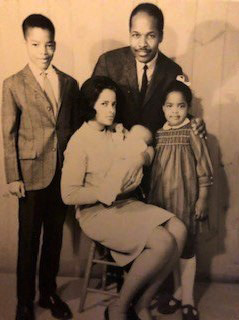
One day in 1930s rural Georgia, Walter Sullivan took his young son, Louis, along on a trip in a Pontiac ambulance, towing a sick man to a doctor’s office. Jim Crow laws of the time did not afford many black people, especially those in rural areas, nearby access to necessary treatments. Walter, who split his time between working as a mortician and an ambulance driver in Blakely, was transporting the patient to the closest town with a black doctor – 40 miles south.
Though Louis was only 5 years old, that trip – and a chance meeting – charted a course that would define his professional life, propelling him to become the founding Dean of Atlanta’s Morehouse School of Medicine and the 17th U.S. Secretary of Health and Human Services. His career likewise inspired his own son, Paul, to enter the health care profession. Today, Dr. Paul Sullivan is an Assistant Professor of Radiology at UT Southwestern.
Watching a father at work
In the 1920s, Walter Sullivan began working as a life insurance salesperson in Atlanta. But when the Great Depression struck, people were more interested in surviving than buying life insurance. So, with his wife and two sons, he left Atlanta for the Georgia town of Blakely – near the Florida and Alabama borders – where he established a funeral home.
“With no black funeral home in Blakely, families would send their deceased relatives elsewhere for funerals – one of the many indignities that black people suffered at this place and time,” Dr. Louis Sullivan said. “His dedication to serving his community led him to establishing the funeral home, as well as transporting the sick to see the nearest black doctor.”
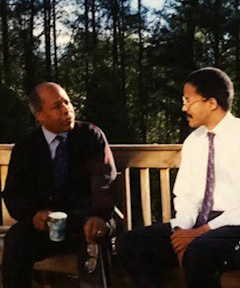
A very young Louis was already interested in science and nature, but became even more inspired on the day of the ambulance trip. That’s when he met Dr. Joseph Griffin, dressed in scrubs, who had built his own brick-walled clinic (truly unique for black people at the time) that had a distinctive smell of ether inside. Louis looked forward to his visits there, growing increasingly impressed by the admiration and respect that the doctor received from the community. Later, when his dad asked him what he’d like to be when he grew up, Louis said he wanted to be a doctor, like Dr. Griffin.
He did that, and more. Dr. Louis Sullivan graduated from Morehouse College in 1954 with a B.S. in biology, then earned an M.D. from the Boston University School of Medicine in 1958 and completed an internship and residency at New York Hospital-Cornell Medical Center, focusing on hematology.
In 1966, Dr. Louis Sullivan began serving his alma mater as the Co-director of Hematology at Boston University Medical Center. The next year, he founded the Boston University Hematology Service at Boston City Hospital.
In 1975, he moved back to Atlanta, where he served as President of Morehouse School of Medicine (MSM) – the first predominantly black medical school established in the 20th century – for more than two decades. As the founding Dean and Director of the Medical Education Program at Morehouse College in 1975, Dr. Louis Sullivan worked to secure state funding; his son, a burgeoning college student at Morehouse College, accompanied him on the trip to the legislative floor.
“There was a committee meeting with several state legislators,” said Dr. Paul Sullivan, who remembers the experience clearly. “He made his presentation, and one old-fashioned senator from rural Georgia who served on the committee insisted the funds for the school weren’t available. My father went on to explain that there was a need and there were funds, especially for the rural communities.
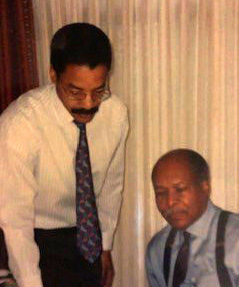
“My father learned how to work with government officials, whether with the state or nationally. Even if there was someone who was trying to halt the progress of the school, my father worked with those who were there to succeed and accomplish his goal. Obstructionists did not deter him.”
Dr. Louis Sullivan had convinced all the other senators of the importance of MSM, ultimately securing the funds for the school. In 1989, he left MSM to become Secretary of the U.S. Department of Health and Human Services under President George H.W. Bush. There, he managed the federal agency responsible for the major health, welfare, food and drug safety, medical research, and income security programs serving Americans.
He served until 1993 and then returned to MSM, where he stayed until his retirement in 2002 and appointment as President Emeritus.
Keeping the family in medicine
While he was growing up, Dr. Paul Sullivan also watched his dad work as a hematologist.
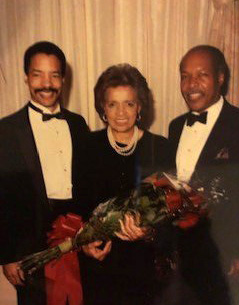
“When I needed medical care, my mom would take me in and I’d meet with the people in the hematology lab,” Dr. Paul Sullivan said. “There were times when I would go in with my father on a Saturday and make rounds with him. He’d let me talk to some of the patients or his colleagues.”
One or two summers in high school, Dr. Paul Sullivan worked as a lab technician in the hematology department, “probably as the youngest employee,” and was allowed to run some of the computerized blood tests.
With the inspiration and example of his father guiding him, he earned his bachelor’s degree in biology at Morehouse College and his medical degree at Howard University College of Medicine in Washington, D.C., in 1985. The summer after his first year of medical school, he got a job teaching incoming classes gross anatomy and helping make up the weekly practical exams.
“I showed the students how to dissect a cadaver,” Dr. Paul Sullivan said. “I really enjoyed working on the body, seeing the differences and similarities of each one. I’m a visual person and really enjoyed the anatomy, so when I did my radiology elective, it came easily to me.”
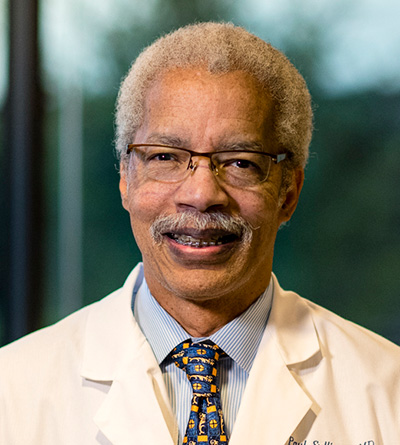
Today, Dr. Paul Sullivan is an Assistant Professor of Radiology at UT Southwestern – and the family’s legacy of care continues here. His work is primarily clinical, seeing patients at William P. Clements Jr. University Hospital, UT Southwestern Medical Center at Richardson/Plano, and Parkland Hospital. He has two sons of his own and hopes to continue the generational tradition of pursuing one’s passion with dedication and hard work
“My father taught me to strive to be the best that I can in whatever field I go into,” Dr. Paul Sullivan said. “Things aren’t always going to be easy, but if you can focus and be determined, you can achieve whatever your heart desires. I hope to give my sons a great example and role models that will show them that they can achieve success as well.”

